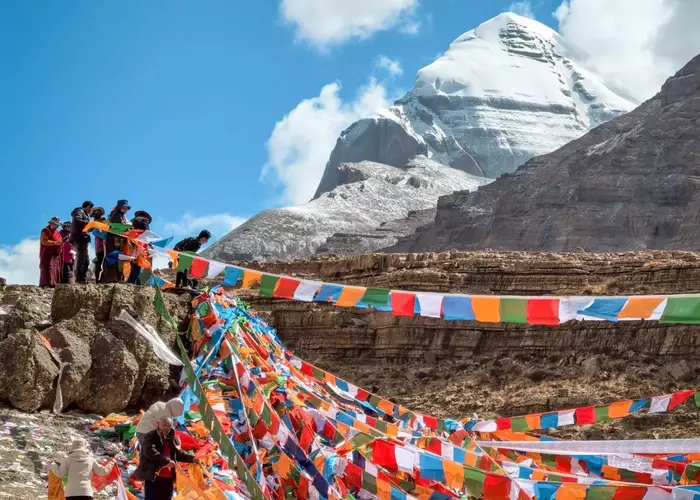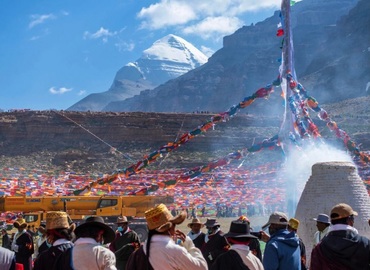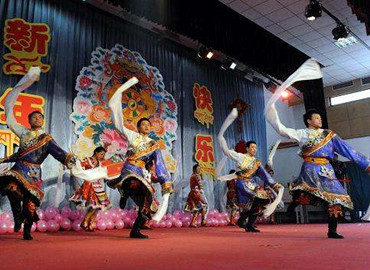Celebrate Saga Dawa Festival at Mt. Kailash
- by Apple
- Last Updated: 2024-12-25
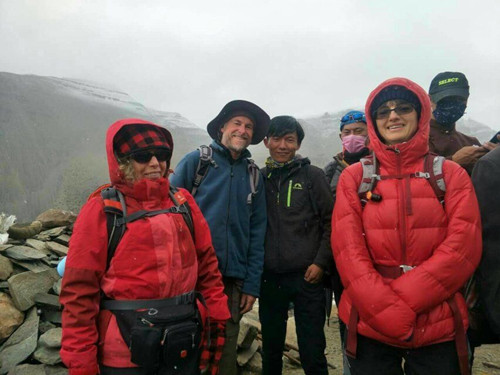
Saga Dawa Festival is also celebrated at Mt. Kailash. The famous Tarboche Flagpole, a huge pole that lies on the Kailash Kora route, has been replaced with new prayer flags and raised up again. Local Tibetans circumambulate the Tarboche Flagpole in a clockwise direction to welcome the newly rising flagpole.
The Tarboche Flagpole is also carefully scrutinized by the Tibetans to look for omens. If it's straight-up directly, the coming year will be prosperous with no disease, healthy livestock and good crop harvests; If the Tarboche Flagpole is leaning towards Mt Kailash, it is an omen for suffering from famines, diseases and untimely deaths. When the flagpole tilts away from Mt Kailash, an alarm is generated in the people as well.
Saga Dawa Festival is the most important religious festival of Tibet, enthusiastically celebrated on the full moon day of the fourth Tibetan Lunar month, usually beginning in May and ending in June by the solar calendar. Dawa means "month" in Tibetan, and "Saga" is the name of a star prominent in the sky during the fourth lunar month of the Tibetan calendar. This is a month especially dedicated to "making merit." Merit is understood in many ways in Buddhism. We can think of it as the fruits of good karma, especially when this brings us closer to enlightenment.
Tibetan lunar months begin and end with a new moon. The full moon day that falls in the middle of the month is Saga Dawa Duchen; Duchen means "great occasion." This is the single most holy day of Tibetan Buddhism. Like the Theravadin observance of Vesak, Saga Dawa Duchen commemorates the birth, enlightenment and death (parinirvana) of the historical Buddha. For Tibetan Buddhists, the month of Saga Dawa is the most auspicious time for meritorious actions. And on Saga Dawa Duchen the merits of worthy acts are multiplied 100,000 times.
During Saga Dawa Festival, monks chanting in monasteries, cham dancing and other religious activities dominate the occasion. And everyone is seen reciting the prayers and playing the holy beads. The entire Tibet is deeply immersed in the festive and spiritual atmosphere. According to Buddhist literary sources, the Saga Dawa festival is celebrated to highlight the day when Sakyamuni (Buddha) attained enlightenment.
WAYS TO MAKE MERIT
Meritorious acts include pilgrimages to sacred places. There are many mountains, lakes, caves and other natural sites in Tibet that have attracted pilgrims for centuries.
Pilgrims also go to venerated monasteries, temples and stupas.
Pilgrims also travel to be in the presence of a holy person, such as a high lama.
Pilgrims may circumambulate a shrine or other holy place. This means walking clockwise around the holy site. As they circumambulate, pilgrims may pray and chant mantras, such as mantras to White or Green Tara, or Om Mani Padme Hum. The circumambulation may include full-body prostrations.
Dana, or giving, may be the most common way for Buddhists of all traditions to make merit, especially giving donations to temples or to individual monks and nuns. During Saga Dawa, it's also auspicious to give money to beggars. Traditionally, beggars line the roads on Saga Dawa Duchen knowing they are certain to receive something.
The lighting of butter lamps is a common devotional practice. Traditionally, butter lamps burned clarified yak butter, but these days they might be filled with vegetable oil. The lights are said to banish spiritual darkness as well as visual darkness. Tibetan temples burn a lot of butter lamps; donating lamp oil is another way to make merit.
Another way to make merit is by not eating meat. One can take this further by buying animals intended to be slaughtered and setting them free.
OBSERVING PRECEPTS
In many Buddhist traditions, there are precepts observed by laypeople only on holy days. In Theravada Buddhism, these are called the uposatha precepts. Lay Tibetan Buddhists sometimes follow the same eight precepts on holy days. During Saga Dawa, laypeople may keep these eight precepts on both new moon and full moon days.
These precepts are the first five basic precepts for all lay Buddhists, plus three more. The first five are:
1. No killing
2. No stealing
3. No misusing sex
4. No lying
5. No abusing of intoxicants
On especially holy days, three more are added:
6. "holy day" precept is to eat only one meal, before noon. This is a basic precept for many monks and nuns, but most of the time it doesn't apply to laypeople. "Grazing" is not allowed; once you've stopped eating for thirty minutes, the meal is done. For Tibetans, this one meal should not include meat, eggs, onions, garlic or radishes.
7. "holy day" precept is to avoid sleeping in a high, soft bed.
8. not to wear adornments -- jewelry or cosmetics.
Sometimes, lay Tibetans turn these special days into two-day retreats, with complete silence and fasting on the second day.
There are, of course, a variety of rituals and ceremonies performed during Saga Dawa, and these vary among the several schools of Tibetan Buddhism. In recent years, Chinese security forces have limited Saga Dawa activities, including pilgrimages and ceremonies, in Tibet.
Clients of GTT have attended the Saga Dawa Festival 2017. Check out the first-hand photos below.
√ MT KAILASH KORA DURING SAGA DAWA FESTIVAL
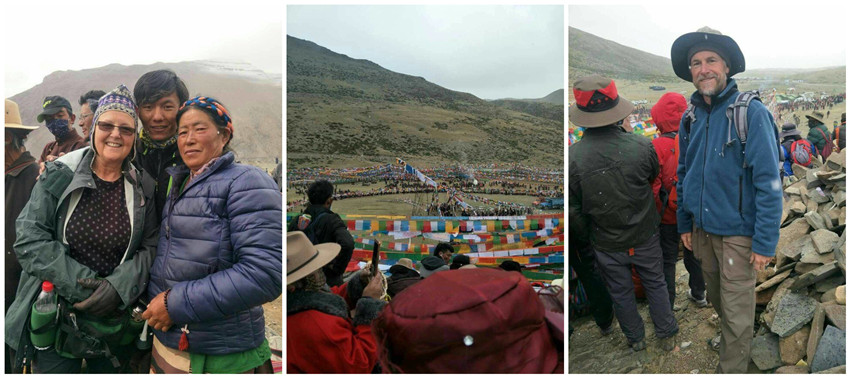
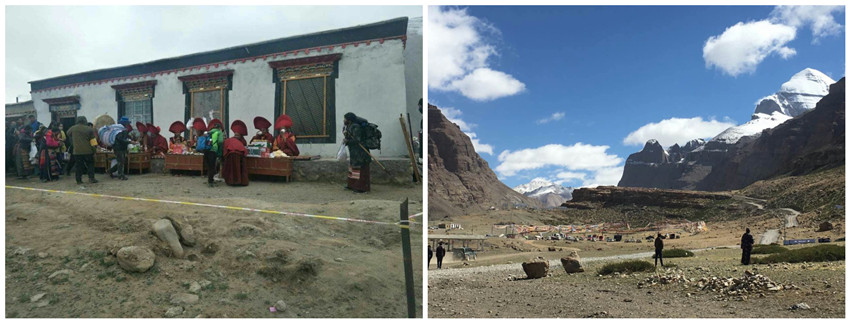
If you have missed the Saga Dawa Festival, Tibet has more festivals in the coming year. Please check the Tibetan Festivals Calendar, or contact us.
Email response within 0.5~24 hours.



